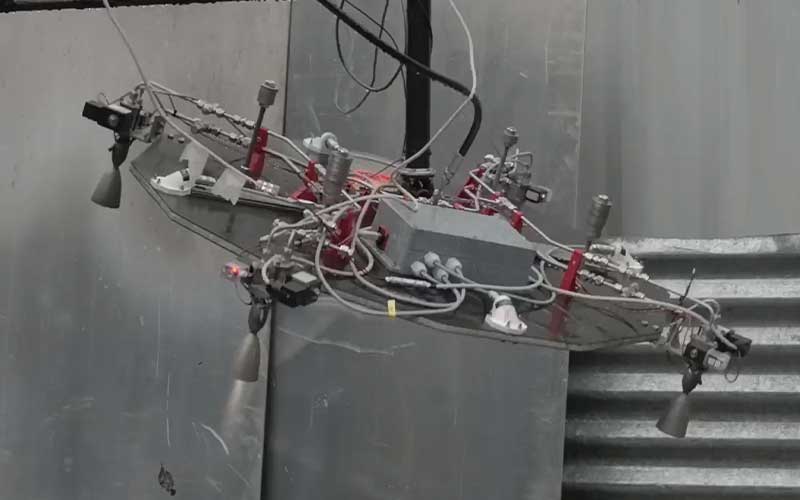
The German space agency DLR announced that it has successfully completed the first hot gas tests of its planetary lander demonstrator.
DLR initiated the Green Propulsion Free-Flight Demonstrator, also known as The Länder, project in 2022. The aim of the project was to bring together various technologies from individual areas of expertise to develop an early landing system that could be used for future crewed and robotic propulsive landings on extraterrestrial celestial bodies. In addition to the lander demonstrator, the project also aims to develop infrastructure to enable future testing of variable-thrust, reusable propulsion systems.
Last week, the DLR Institute of Space Propulsion announced that the demonstrator had completed its first hot gas tests. The testing was conducted at the M11 test bench complex at the DLR testing facility in Lampoldshausen.
The demonstrator is equipped with four 22-newton HyNOx engines developed by InSpacePropulsion Technologies, a DLR spinoff that was founded in 2023. The company manufactures three variants of its HyNOx engines, which produce 1, 22, and 200 newtons. The HyNOx-22, the variant utilized for The Länder, is manufactured using 3D-printing technology and is powered by nitrous oxide and ethane.
During the test, the four engines were utilized on the four corners of the lander demonstrator to begin to test control systems. Testing of the demonstrator will continue into the new year, with the project scheduled to be concluded in 2026.
While the main goal of the project is to develop a lander demonstrator and the infrastructure to test it, DLR believes that the technology developed during the project will also have broader applications, including future orbital transportation.




